Find a practice to try with your team

Stopping the Line for Safety
Errors drop significantly as team improved its process and culture.
- Poor communication accounts for more than 60 percent of medication errors nationwide, and contributes to a significant increase in patient complications or death.
- Radiologic technologists are asked to speak up immediately and “stop the line” if they encounter any deviation from workflow or a risk to patient safety.
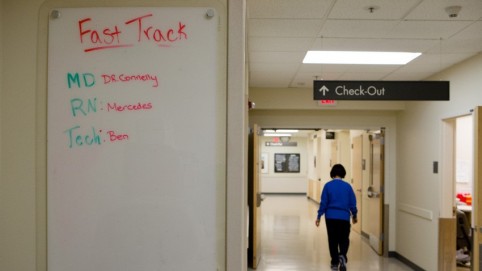
Putting Patients on the Fast Track
After four months of rapid improvements, emergency room stay decreased from 162 minutes to the team’s target of 90 minutes.
- The length of stay exceeded national benchmarks — patients were waiting up to three hours with minor injuries that required a short amount of physician time.
- The team defined triage urgency using the Emergency Severity Index (ESI) and set up a fast track area at the front of the department.
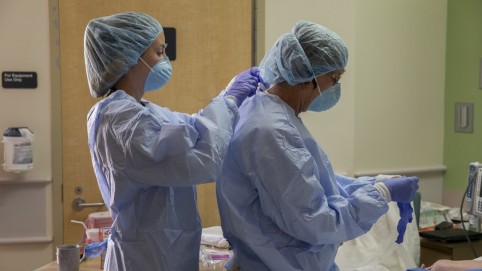
Create Surgery Wait List
Dedicated employee shrinks surgery wait list backlog by 70 percent, clearing the way to fit emergency patients into the schedule.
- Plastic and Reconstructive Surgery patients were complaining about the wait for surgery, and the backlog prevented the scheduling of emergency surgeries.
- Created a wait list and called patients in order when there was an opening for surgery, so the process was fair to all patients.
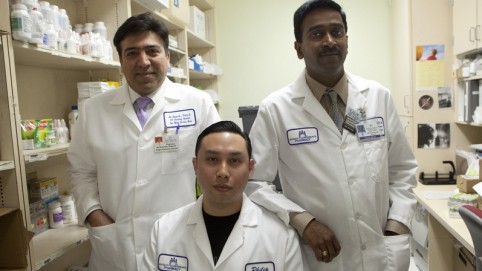
Pharmacy Cuts Wait Times
Pharmacy team fills 89 percent of prescriptions in 15 minutes, and improves patient satisfaction scores 5.7 percent in one year.
- Backups in workflow contribute to long patient wait times and low patient satisfaction scores.
- A pharmacist now continually monitors incoming same-day prescriptions, and moves them ahead of the line to be processed immediately.

Questionnaire Shaves Wait Time
Patient wait times after gastrointestinal procedure reduced 18 minutes.
- From feelings of frustration and disrespect to increased risk of infection, making patients wait has negative outcomes.
- Create a questionnaire to hand patients at check-in, and train staff on new process.

Engaging Eye Exams
96 percent of engaged ophthalmic patients due for breast, colorectal or cervical cancer screenings agreed to a preventive health screening.
- Preventive screenings are key to early detection and treatment of conditions and diseases, so encouraging patients to receive needed screenings helps manage their health.
- Measure and report weekly on level of staff engagement with patients and resulting successful screenings

Effective Smoke Screens
Smoking cessation screenings given to identified smokers at 93 percent of patient visit— up from 0 percent.
- Tobacco use accounts for 1 in 10 adult deaths and kills more than 5 million people annually—an average of one person every six seconds.
- Printing out registration slips with questions regarding smoking, so smokers can identify themselves up front.

HPV Mission: Identify and Immunize
Nurses worked with their information technology colleagues to make computer upgrades that led to better immunization rates.
- The HPV vaccine can help reduce the risk of cervical cancer, but if shots aren’t completed in time the series must be started all over.
- The team worked with IT staff to identify 11- and 12-year old girls who needed the vaccine, and contacted parents to make appointments

Easing the Pain for Babies, Families
NICU team improves service scores and provides better service by educating new parents about infant pain management.
- Caregivers want not only to manage babies’ pain but also alleviate parents’ anxieties and help them know what to expect.
- Use a consistent script to discuss pain management during the admission process and keep parents informed throughout the baby’s stay in the NICU
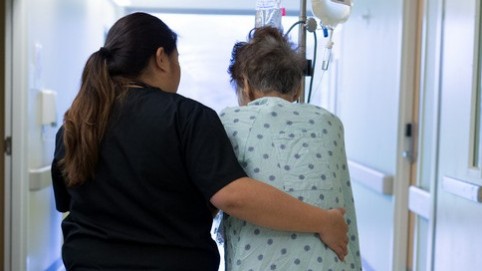
No One Walks Alone
From an average of 16 patient falls per month, the number went down to three a month.
- Both patients and morale were suffering at the San Diego Medical Center telemetry unit, which had twice as many patient falls as the next-worst unit.
- Treat every patient as a fall risk and ensure each patient is accompanied — especially to and from the bathroom, when most falls occur
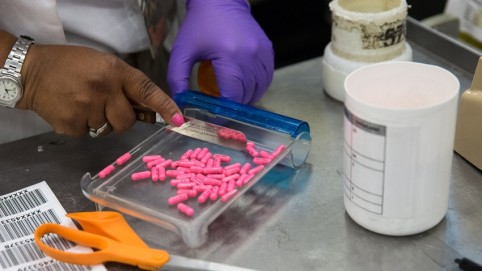
Priority Prescriptions in 15 Minutes
Pharmacy team does better than regional goal, filling 88 percent of high-priority prescriptions promptly.
- Team overcame challenges — the department was undergoing a remodel and adjusting to a new robot dispensing device—to meet a regional “fill now” goal.
- Team implemented a quiet zone, which reduced distractions.

A Drop in Patient-Lifting Injuries
No staff injuries related to patient handling for 140 days thanks to signs, better communication.
- Absences, stress and worker’s compensation claims decreased when patient-handling injuries were reduced to zero in 140 days, down from two to four per quarter.
- Used signs to visually remind to nurses and other staff about the importance of working safely.
